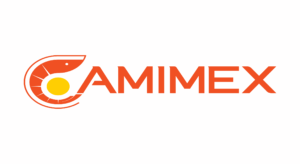In September 2023, the European Union (EU) introduced the “Critical Raw Materials Act” (CRMA), with copper and nickel being included in the list. As essential raw materials for modern industry, the EU’s decision to include these two metals in the critical raw materials list aims to ensure a stable supply and promote its own energy transition and sustainable development, potentially impacting the global metal market and industrial structure.
I. Inclusion of Copper and Nickel in the EU’s Critical Raw Materials List
In September, the EU unveiled the CRMA, adding copper and nickel, two major industrial metals, to the list of critical raw materials. Previously, this list mainly focused on minerals such as cobalt, lithium, and rare earths. According to the EU’s official website, the 2023 critical raw materials list includes aluminum, lithium, phosphorus, antimony, feldspar, light rare earth elements, scandium, arsenic, fluorite, magnesium, metallic silicon, spodumene, gallium, manganese, strontium, beryllium, germanium, natural graphite, tantalum, bismuth, hafnium, niobium, titanium metals, boron, helium, platinum group metals, tungsten, cobalt, heavy rare earth elements, phosphate, vanadium, copper, and nickel.
II. Ensuring Supply as the Primary Reason for Copper and Nickel Inclusion
From the supply perspective, although copper and nickel are among the most common metals on Earth, high-quality and easily accessible ore deposits are gradually diminishing worldwide. Additionally, the mining and processing of copper and nickel ores are frequently hindered by various factors such as environmental protection regulations, labor strikes, and community disruptions, leading to an increasing scarcity of global copper and nickel resources. On the demand side, these two metals find widespread applications in traditional industries like electricity, electronics, energy, petrochemicals, machinery, metallurgy, transportation, and steel production. They are also gaining importance in emerging sectors such as electric vehicles, lithium-ion batteries, and solar cells. With the growing demand for green energy globally, the need for energy transition metals like copper and nickel is expected to rise further. This has led to increased interest from global capital, driving up prices and volatility of copper, nickel, and other critical metals, making them a focal point for major economies.
As one of the world’s largest industrial economies, the EU has a significant demand for copper and nickel. According to EU statistics, the EU can currently meet only 1/5 of its copper demand and 1/4 of its nickel demand, highlighting supply deficiencies. Consequently, the EU’s decision to include copper and nickel in the critical raw materials list primarily aims to strengthen control and management of these two metals to ensure their stable supply at reasonable prices. This move aims to reduce dependence on other countries and maintain the EU’s industrial production and economic stability. Additionally, while countries worldwide are actively promoting clean energy and reducing carbon emissions, the EU plans to achieve carbon neutrality by 2030. The stable supply of critical raw materials like copper and nickel is crucial in achieving this goal. The EU’s inclusion of copper and nickel in the critical raw materials list also serves to promote its own energy transition and sustainable development. Furthermore, the EU hopes that this decision will foster cooperation and trade with other countries, enhancing supply chain transparency.
III. Multiple Impacts of the EU’s Inclusion of Copper and Nickel
To ensure the stable supply of copper and nickel, the EU has taken action and is actively seeking new supply sources. The EU is engaging in multi-layered and multi-channel cooperation with African and Latin American countries to explore new copper and nickel ore deposits in these regions. Additionally, the EU is strengthening cooperation and trade with other copper and nickel-producing countries to ensure a smooth supply chain.
The EU’s inclusion of copper and nickel in the critical raw materials list not only supports its domestic industries and businesses but also has three significant impacts on the global copper and nickel markets. Firstly, it affects the policies and industrial structures of copper and nickel-producing countries. To meet the demands of the EU market, these countries need to enhance mineral resource exploration and extraction, improve mining management and technological capabilities, and also focus on environmental and labor protection to ensure sustainable production. For countries that have previously slowed down copper and nickel production for various reasons, the EU’s decision will compel them to reevaluate their domestic mineral resource development policies, accelerate technological upgrades and transformations to better adapt to market changes. Secondly, it influences the international competitive landscape of related industries. Following the COVID-19 pandemic, as the global economy gradually recovers and strengthens, the demand for copper and nickel is expected to increase. The EU’s decision intensifies the competition for copper and nickel resources globally. Especially for major economies with significant external dependencies, there will be increased competition for global copper and nickel resources. This may involve increased overseas investments or the formation of alliances for metal mining, enhancing the stability of domestic copper and nickel supplies. These effects will have both direct and indirect impacts on the global metal market.
[Source – 上海有色网] 欧盟将铜、镍列入关键原材料清单的多重影响 https://news.smm.cn/news/102518117





